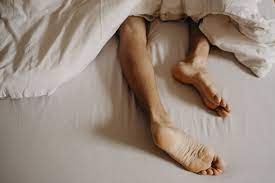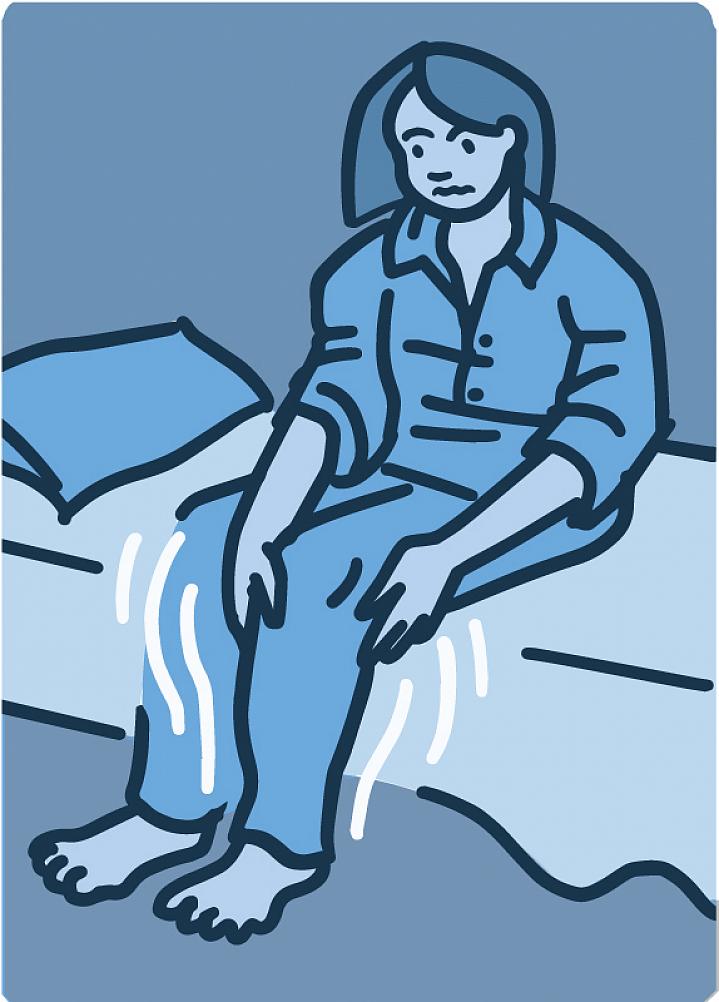

Restless legs syndrome is one of the most common nervous system diseases. Individuals with this disease experience a feeling of discomfort in the legs, feet and sometimes in the arms, especially during rest. As the disease can occur at any age, the problems caused by the disease increase with age. If the individual remains inactive, an increase in the feeling of restlessness in the affected areas is observed. Many patients complain of an uncontrollable urge to act. This feeling of discomfort, which increases especially at night, negatively affects the quality of life of patients. Sleep problems caused by the disease can also be observed in many of the restless legs syndrome diseases.

The symptoms seen in individuals suffering from restless legs syndrome can be listed as follows:
Feeling restless in the legs and feet
The constant need to move due to a feeling of restlessness
Pain and discomfort that increases at night
The feeling that the pain and restlessness are reduced for a short time by moving the affected area
Involuntary twitches in the legs
What are the causes of restless legs syndrome?
Restless legs syndrome often occurs in an unknown (idiopathic) way. In some cases, other factors in the individual play a role in the emergence of the disease. Some of these can be listed as follows:
genetic predispositions
Dopamine imbalance
Pregnancy (especially the last trimester)
Anemia due to iron deficiency or other causes
neuropathy
excessive alcohol use
Formation of spinal cord or spinal block in the spinal cord
Use of antidepressant and antipsychotic drugs that increase the amount of serotonin
How is restless legs syndrome diagnosed?
In order to diagnose restless legs syndrome in individuals, first of all, the disease history of the individual and the diseases seen in his family should be learned in detail. In cases where the disease is suspected, physical and neurological examinations are performed. It is of great importance that physicians who are experts in the field of sleep disorders also examine patients during the diagnosis phase. Some electrophysiological tests and blood tests can be used in the diagnosis of the disease. The treatment process should be meticulously planned in patients who are diagnosed with restless legs syndrome as a result of diagnostic tests.

What are the types of restless legs syndrome?
Restless legs syndrome is basically divided into 2 subgroups:
Idiopathic Restless Legs Syndrome: In this type of restless legs syndrome, the exact cause of the disease is unknown. It can be divided into idiopathic restless legs syndrome of genetic origin and non-familial restless legs syndrome.
Secondary Type (Secondary) Wormless Leg Syndrome: In this type of the disease, restless legs syndrome occurs due to any other disorder in the individual. This disease; There may be polyneuropathy, kidney disease, parkinson's, anemia, pregnancy, vitamin or mineral deficiency, or some rheumatic diseases.
What are the treatments for restless legs syndrome?
Determining the type of the disease plays a very important role in the treatment of restless legs syndrome. In case of any problem such as iron deficiency or anemia underlying the disease, a treatment plan should be applied primarily to eliminate this problem. In other cases, massage, hot and cold compress applications, exercise and drug treatments can be used. In this disease, where nutrition is also of great importance, it is beneficial to keep the dietary intake of substances that trigger the disease, such as caffeine, under control. Apart from these, patients with restless legs syndrome should avoid situations such as stress, smoking, and being inactive for a long time. If you also have restless legs syndrome, you can prevent the problems caused by the disease and increase your quality of life by complying with the treatment principles recommended by your doctor and having regular check-ups.